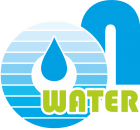How Do You Make A Plasma?
08.04.2023Gas atomizers are better for certain materials, equivalent to cobalt and steel, as these supplies should not very reactive, and you’ll produce several kilograms a second. So, there are some advantages in utilizing fuel atomization in certain eventualities, particularly as the expertise is extensively accessible. What’s the future of plasma atomization? Previously, we had the stone age, the bronze age, and the iron age. Now it’s the plasma age. We use a number of extremely versatile encapsulation processes to prepare particles together with atomization processes equivalent to spinning disk, spray drying, spray chilling, and congealing to assist resolve product performance necessities. Our modern disk processes yield narrow particle dimension distributions, produce micron-sized particles, and process batch sizes down to a couple grams with high restoration efficiency for client products, drug discovery, and more. We use a number of atomization processes to solve product performance requirements.
In the first part, the pattern dries out at a low temperature. The second part involves the ashing of the pattern in a graphite furnace. The third part is the rapid temperature enhance inside the furnace to make the vapour section of the sample; the vapour phase accommodates the atoms from the sample. We can measure the absorption utilizing these atoms by placing the pattern above the heated surface. Sometimes, the graphite furnace comprises a graphite tube that’s open at each ends. Wanting in direction of future applications, there’s a necessity within the space business for both rockets and in satellites. This space race goes to depend on 3D printers to build smaller and cheaper rocket launchers that can withstand high temperatures. Plasma-atomized powders are going to be excellent for these purposes. Going forward, we’re additionally going to want evermore heat-resistant and corrosion-resistant supplies, and plasma is an efficient system to supply and examine these supplies. Are you prepared for the dawn of the plasma age? If you’re prepared to join us, you’ll find out more by getting in contact with us to discuss.
Excessive quantity Low Strain (HVLP) — HVLP uses increased volumes of air (11 to 30 CFM) at low stress (underneath 10 PSI) to atomize the coating. HVLP provides excessive transfer efficiency and is limited by Authorities Environmental Legislation to a most of 10 psi atomizing pressure measured at the air cap. Low Quantity Medium Strain (LVMP-Complaint-TranTech) — this know-how makes extra power obtainable for the atomization course of thank HVLP, however delivers transfer efficiencies equal to these of HVLP. Air cap stress is in the realm of 25 to forty five PSI whereas utilizing 9 to 20 CFM for atomization of coatings. Is plasma-atomized powder different from different steel powders? Sure, with a plasma-atomized powder, you have very excessive sphericity, excellent flowability, and a very good powder. The powders from other technologies (such as gas atomizers) might not be as prime quality. Nevertheless, smoore for some powder metallurgy applied sciences, gas-atomized powders are ok, however different functions, they don’t seem to be appropriate. Essentially, the higher the performance requirements shall be for the powder, the extra necessary it’s going to be to have a plasma-atomized powder.
Air Assisted Airless provides quick utility of materials, a comfortable spray that reduces for overspray and bounce-again, and the power to penetrate into recesses and cavities. This is very necessary where intricate shapes require a constant movie construct. Airless — Fluid atomized by excessive strain (often three,000-7,000 psi) and pushed by an orifice in the spray tip which is usually .015″ — .035″ in diameter. The form of the orifice determines the form and size of the spray pattern. With airless technology, the size of the atomized particle is larger than other spray strategies and therefore typically not used for attaining fine finishes. Electrostatic — Electrostatic spray finishing combines the mechanical process of atomization with the distributive results of electrical attraction and repulsion to realize a high quality environment friendly product ending operation. Atomization is achieved in liquid methods by air, airless, air-assisted airless, or rotary apparatus. The atomized droplets of coating material are put by way of a highly ionized zone where the coating particles choose up a cost. Particles are equally charged, and like expenses repel one another inflicting the particles to kind a bigger, more evenly distributed spray pattern than a non-electrostatic pattern.




